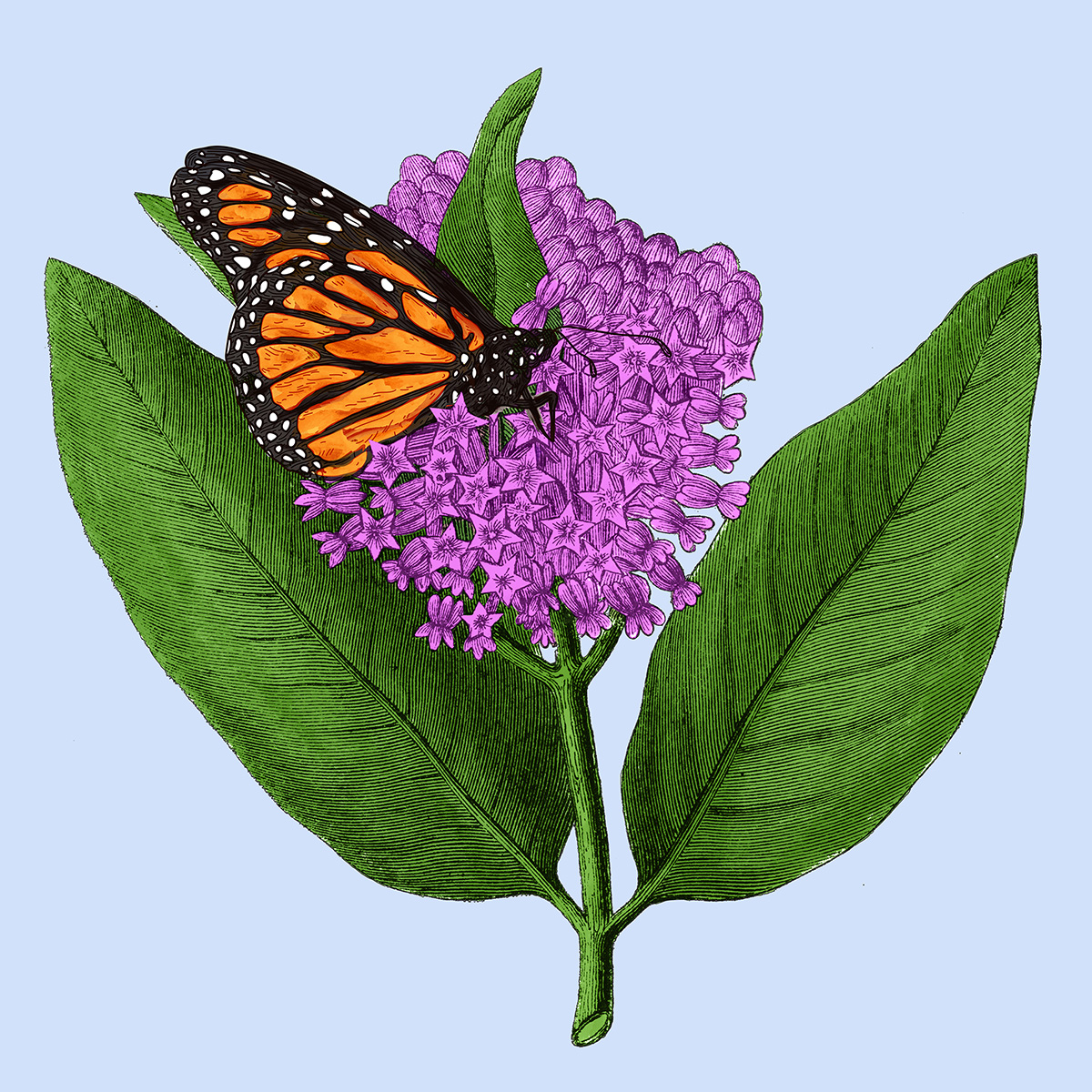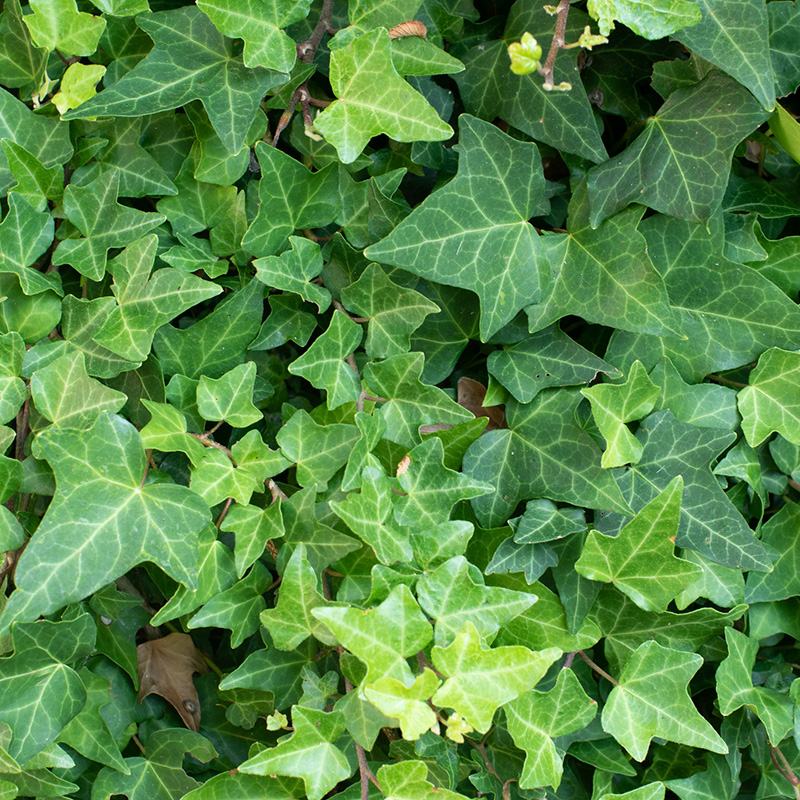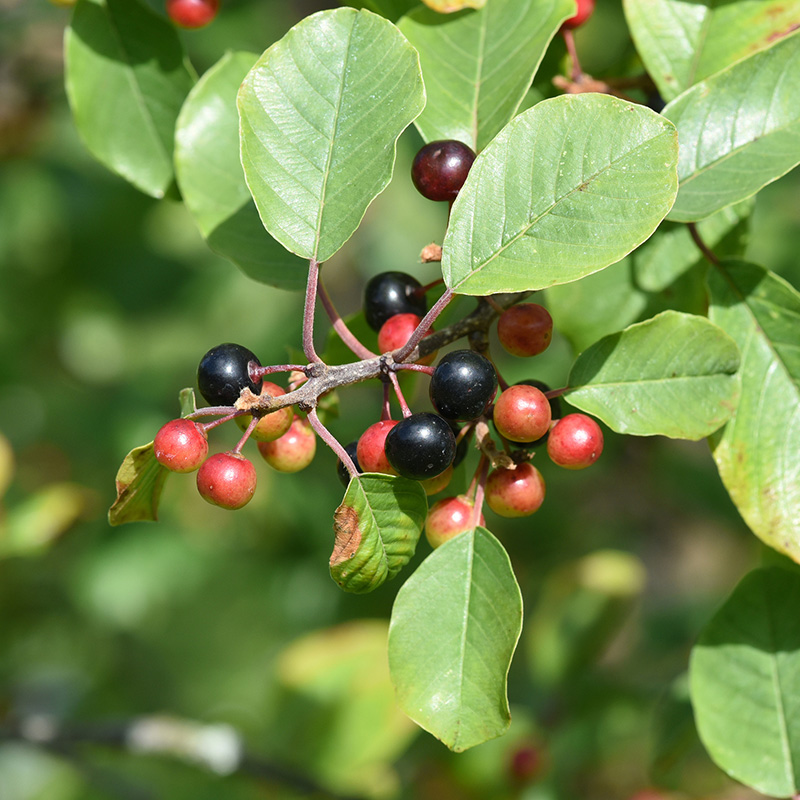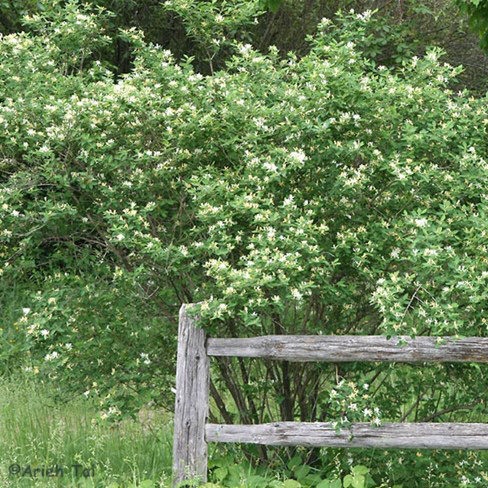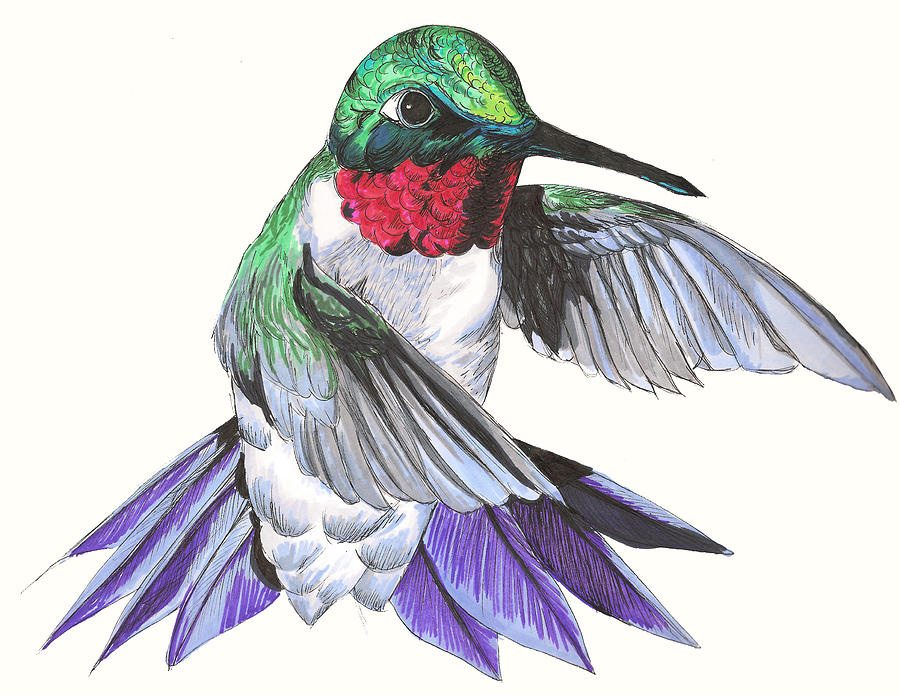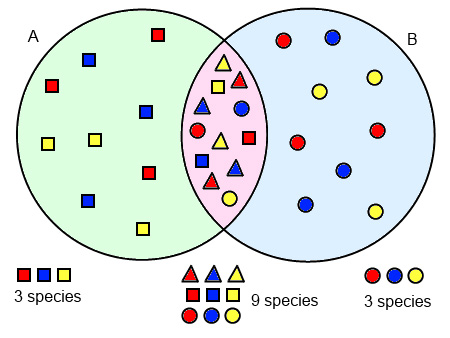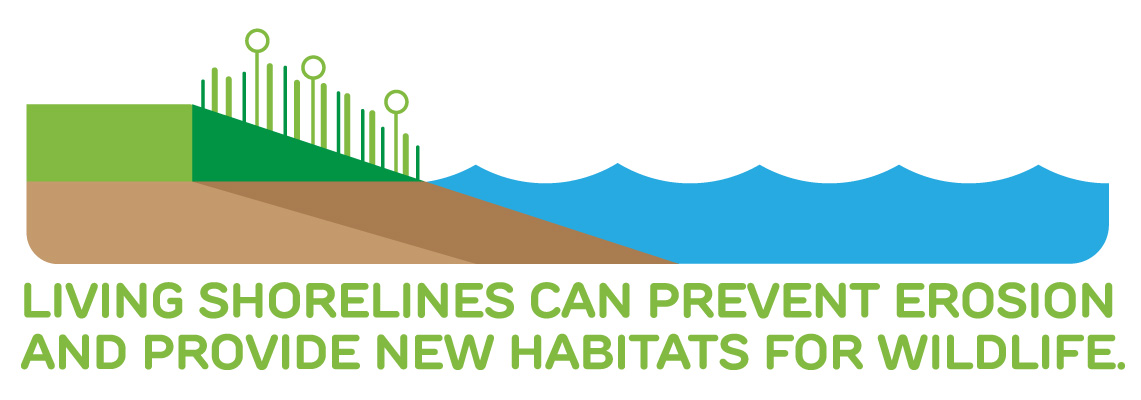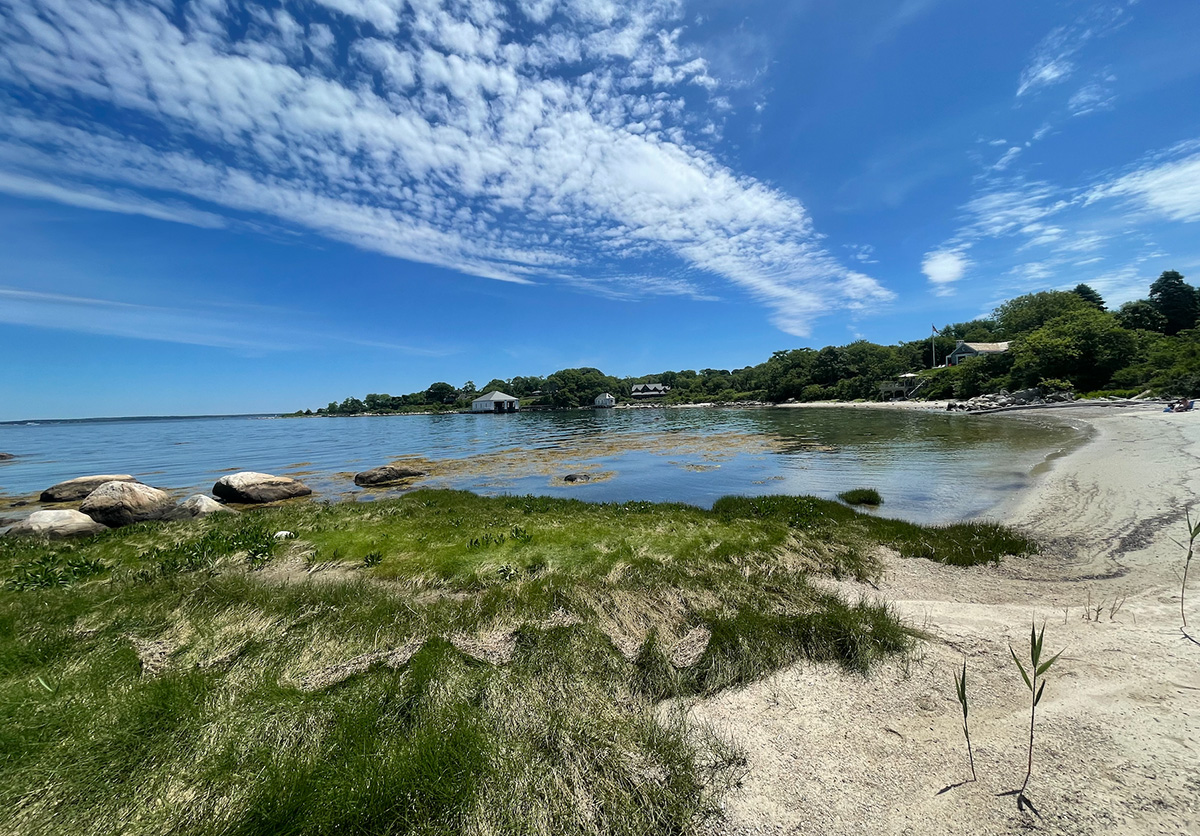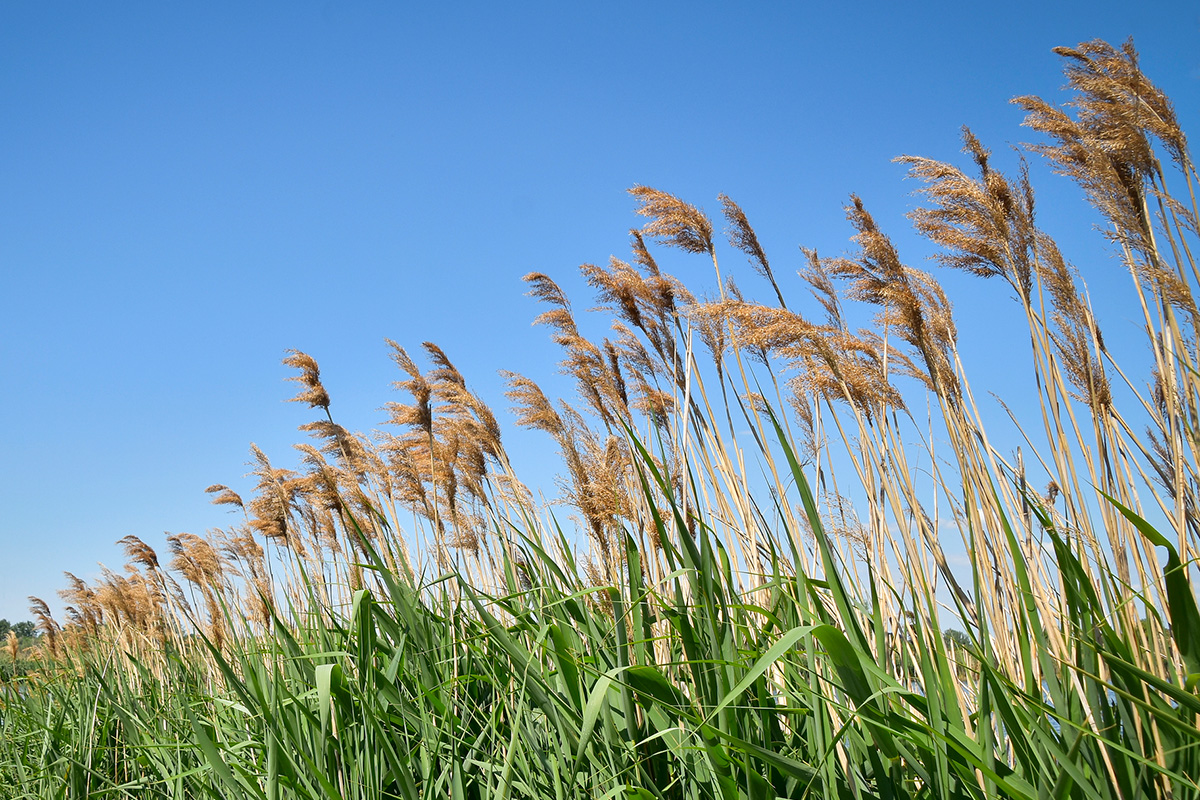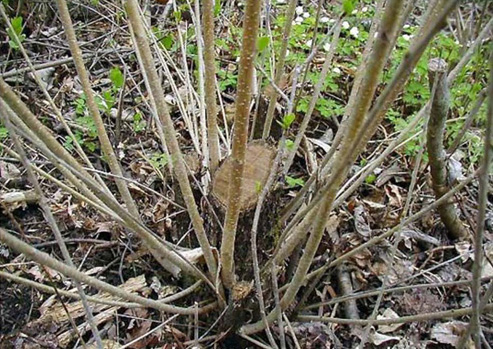Chocomount Cove Property
Restoration
Fishers Island is home to many rare plant and animal species. The Land Trust protects 373 acres of shoreline communities, coastal ponds, freshwater wetlands, vernal pools and a 40 acre maritime grassland.
In 2021, the New York Natural Heritage Program (NYHHP) scientists were contacted by the museum to conduct a two-year biodiversity survey to evaluate the extent of the many rare plants, insects, amphibians, reptiles, bats, and other species on the museum’s properties and easements across the island.
In June 2022 Long Island Invasive Species Management Area (LIISMA) met with the HLFM Land Trust staff to survey and map Chocomount Cove Trail and Beach in order to help develop a strategic management and restoration plan.
Some of the invasives that were mapped include knotweed (Reynoutria spp), common reed (Phragmites australis), bittersweet (Celastrus orbiculatus), porcelain-berry (Ampelopsis brevipedunculata) and mugwort (Artemisia vulgaris).
Based on the findings and recommendations, the Land Trust developed the following restoration plan for Chocomount Cove Trail and Beach.
Station 1 – Reclaiming a Desert
The conservation value in this area has been compromised by English ivy vines, glossy buckthorn trees and the honeysuckle vines and bushes.
English ivy
Associated with legacy and prestige, English ivy has become one of the most prominent invasive plants in forests, especially near the coasts. As it has here, this exotic plant forms thick mats of groundcover, known as “ivy deserts”, where other plants seem unable to compete. The mat blocks natural regeneration in forests, displaces native species and damages trees.
Ivy is toxic to most native songbirds, however the berries are consumed by certain species including blackbirds, starlings, robins, house sparrows and cedar waxwings.
Glossy buckthorn
Glossy buckthorn has been growing on Fishers Island for so long that most people think that it is a native – but it isn’t. Growing throughout Eurasia and northern Africa, buckthorn was brought to the US during the1800s and planted as an ornamental and windbreak.
It is a significant conservation problem. It has been found to:
- Decrease soil pH
- Lower the water table
- Increase decomposition rates, decreasing the number of vegetative hummocks
- Decrease light availability to the understory and shade out native species
- Decrease graminoid (e.g. grasses, sedges) relative abundance
- Cause potential allelopathic effects similar to common buckthorn
- Decrease total plant cover and reduce recruitment and survival of native saplings
including economically valuable hardwoods - Alter pollinator communities in abundance and diversity
- Harm songbird habitats
- Create an acceptable environment for exotic earthworms
Making matters worse, it is difficult to eradicate since cut stumps quickly resprout multiple stems from the root crown. Even prolonged cutting twice during a growing season has no long term effect and may promote root development.
Honeysuckles
Two species of honeysuckles have been growing in this location. The leggy bush, which is growing closer to the road, is Morrow’s honeysuckle. Growing within the interior of this plot, is the vine honeysuckle, which has a paper-like bark and gold and silver flowers. Both are non-native and invasive. However, these honeysuckles are a mixed bag and each species will be treated differently.
Non-native honeysuckles are not all bad. One study found The abundance of fruit-eating birds … is linked to the abundance of honeysuckle, … Honeysuckle comprises more than half of all the fruits available in the landscape, and it benefits birds by providing them with a source of food in the fall.
Learn more about these invasive plants:
Some content adapted from: Canadian Journal of Plant Science, 28 March 2018, https://doi.org/10.1139/cjps-2018-0009
Other sources:
https://www.michigan.gov/-/media/Project/Websites/invasives/Documents/Response/Status/egle-ais-frangula-alnus.pdf?rev=6d5550e9d1bc4c538ef72a11564e0f7f
https://www.fs.usda.gov/database/feis/plants/shrub/fraaln/all.html
https://mitppc.umn.edu/research/research-projects/cover-it-using-plants-control-buckthorn
https://www.psu.edu/news/research/story/invasive-plants-can-create-positive-ecological-change-study-finds/
Station 2 – Picking Your Battles – Protecting People and Trees
The challenges to conservation efforts caused by invasive species on these Chocomount Cove plant communities can be daunting. We have to give priority to managing habits having the most desirable conservation and user-experience impacts.
The successional forest area here, and continuing around the grassland ahead, is a forest in the making and rife with invasive species. As the forest matures and the conditions change, many of these species will disappear on their own.
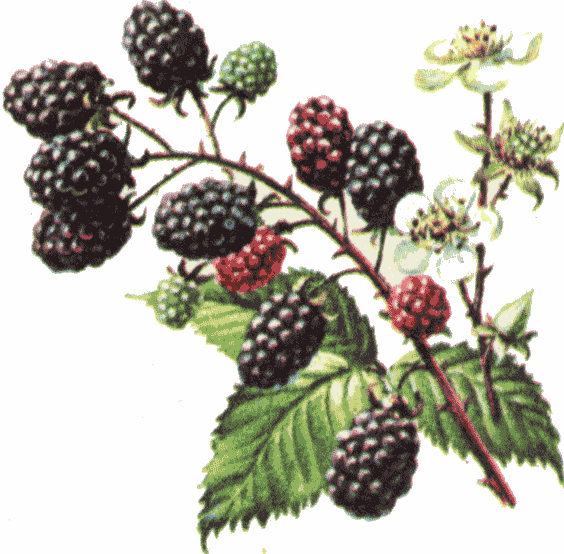
Station 3 – Effects of Geology and Land Use
Like the rest of Fishers Island, this land was formed by the sand, gravel, rocks and boulders that were created, carried and dropped by retreating glaciers nearly 20,000 years ago. It’s likely that Chocomount Cove is a remnant of a chunk of glacier ice that became surrounded by geological debris and then melted, leaving the depression forming the crescent cove. The property’s current state owes much to the geologic history.
Along with geology, land use (clearing for livestock grazing) and weather events (’38 hurricane) set the stage for the current vegetation pattern and the high levels of invasive plants.
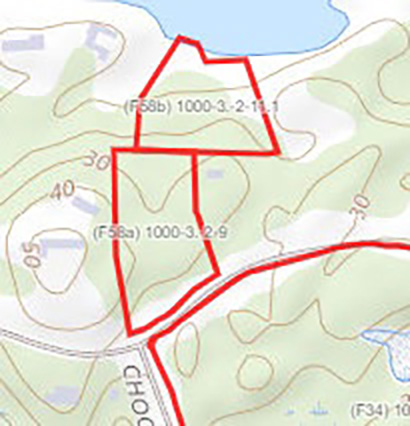
The land
The land cascades 40′ from near the trailhead to the beach over the length of a football field.
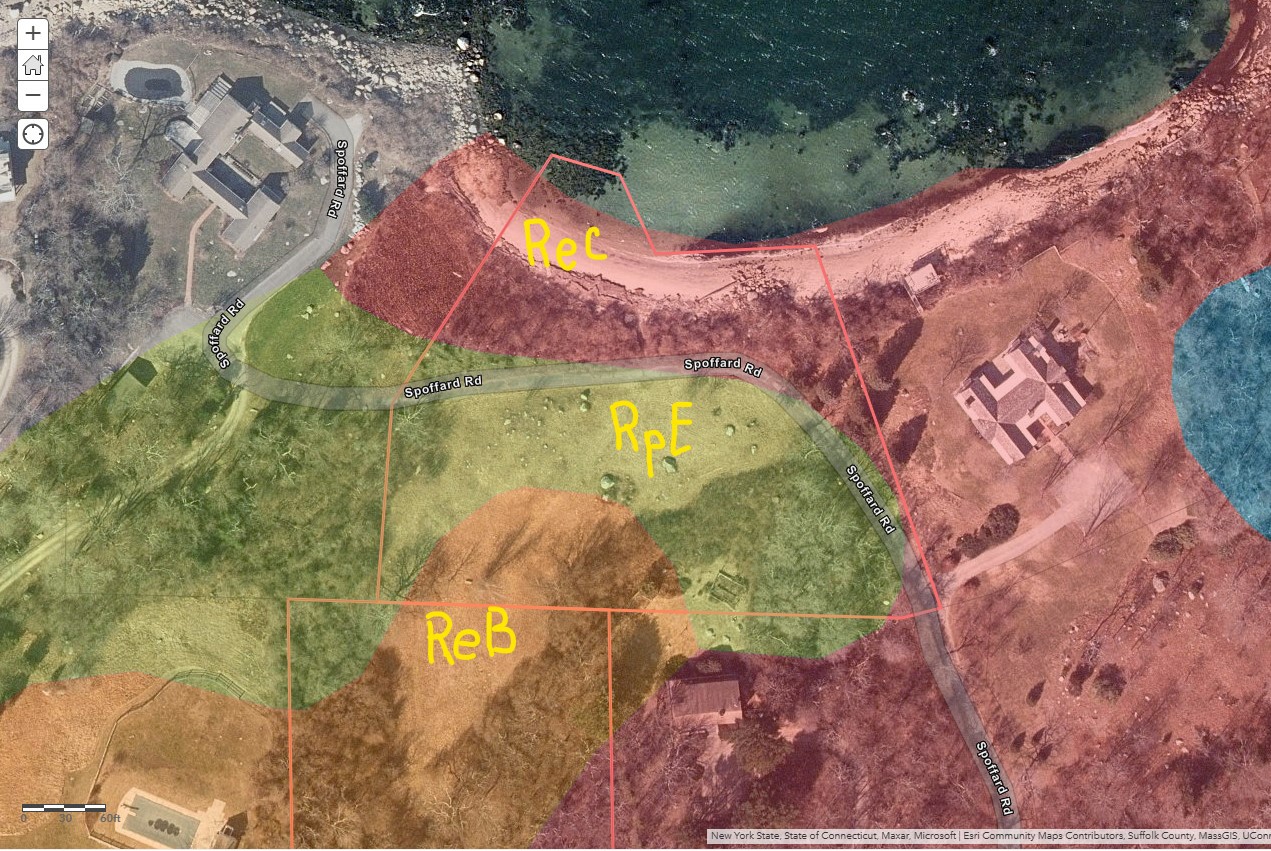
Soil series classification
Soil Series classification represents both composition and slope from very stony sandy loam, 3 to 8% slope (ReB) to very bouldery soil, 15 – 35% slope (RpE) to very stony sandy loam, 8 to 15% slope.
Station 4 – Old Field to Pollinator Meadow
80% of this Old Field is covered by non-native invasive plants. A factor contributing to the high proportion of invasive species has been the previous mowing method and schedule, which included short cutting height and the two-to-three times per growing season cutting schedule. This will change to once per growing season, likely mowing each half every other year coupled with targeted control of invasive plants. Areas with high density of desirable plants, especially grasses, may not be mowed. This is a multi-year project.
Initial inventory is needed: We will establish a virtual and physical grid of 10’ X 10’ (3 m. X 3 m.) cells across the entire property using a sub-meter GPS receiver coupled with a phone-based mapping tool. An inventory of each cell would suggest priorities for the iterative removal and replacement of undesirable plants in this order of priority:
- Highest detrimental impact, lowest density
- Exotic plants considered to be especially invasive, allelopathic or toxic
- Native but aggressive or toxic (poison ivy)
- Successional native woody plants in the successional old field – maintained as occasional
The methods for invasive plant removal are mechanical. The exact method or methods would depend on species and context:
- cutting
- digging
- spading
- pulling (weed wrench)
- covering
- solarization
Station 5 – East Side of the Old Field
This section on the eastern side of the Old Field has fewer invasive species than the western side so control activities will likely concentrate on selective removal of individual plants and lower mowing frequency. Time will show the results of this management approach.
Station 6 – Transitions
Once known as Spofford Road, this area is transitioning from road to ecotone. An ecotone, also an area of transition, is a zone between two stable natural plant communities. In this case, between the field and the shrubs. Areas like this tend to be more species diverse than either area alone. Ecologist have named this the “edge effect.”
Station 7 – Defense and Disorder
Although this maritime shrubland is a hodgepodge of native and invasive species, it provides a vital service by protecting the inshore natural plant communities. The combination of the shrubland, the plants along the beach and the seagrass beds fringing the shore unite to create a “living shoreline.” Living shorelines provide a similar function to shorelines hardened by rip-rap and stones at a lower cost and with a greater conservation value.
For more information about Fishers Island’s seagrass beds and living shorelines visit the FISM website.
Station 8 – Invaluable
The marine intertidal gravel sand beach in Parcel CC2 at point CC2.03 has the highest Weighted Floristic Quality Index Score (FQI 8.00) for that community found during our ecology surveys. This community is typically unvegetated. ~ NYNHP
Amongst the most valuable plants is the rare seaside sandwort (Honckenya peploides). Often a founding member of a living shoreline, H. peploides was one of the first plants identified on the newly emerged lava island of Surtsey while it was still cooling down after the underwater eruption.
As an early colonizer of beaches, seaside sandwort has adapted to conditions generally detrimental to plant life:
- Scarce freshwater and nutrients,
- burial by shifting sands,
- inundation by salt water and frigid cold and blistering heat (as anyone treading the sand during the midday summer sun can attest!)
Newly established populations change and prepare the habitat for the succession of other species.
Seaside sandwort flowers are either male or female and nectar-rich, providing food for bees and other pollinators.
Station 9 – Hold that Line
The invisible boundary line between Land Trust property and the adjacent property separates a rare and protected plant (seaside sandwort) from the looming menace of Phragmites. P. australis, the common reed, is an exotic and highly invasive species that is difficult to eliminate once established.
Although common reed contributes to living shoreline stability it can form dense stands that overrun native species. Dense stands have been found to lower the microclimate of the immediate area. This affects the successful reproduction of diamondback terrapins, since lower temperatures affect hatchling sex ratios, favoring males over females. This has dramatic impact on the survivability of populations.
Researchers at the Smithsonian Environmental Research Center demonstrated that Phragmites invasion is linked to the level of genetic diversity contained within patches: “We found that Phragmites needs to have more than one genotype in a patch to produce significant numbers of viable seeds. This explained why Phragmites, which first invaded the Chesapeake Bay over 200 years ago, has only recently begun to spread explosively. Only after multiple genotypes became established close together, which appears to have taken many years to happen after initial invasion, were enough seeds produced to fuel further spread.”
Source: https://serc.si.edu/research/projects/invasion-forensics-and-invasive-phragmites
Station 10 – Unfinished Business
Glossy buckthorn are non-native and invasive plants that have many negative effects on their immediate environment, including inhibiting the growth of other, in many instances, more desirable native plant species. Along Chocomount, Island Pond and Treasure Pond Trails are the previously cut stumps of glossy buckthorn. These plants were cut as an interim action to prevent the trees from producing seeds. Unless other measures are taken, these stumps produce numerous sprouts capable of growing into seed-producing trees.
During the past few years we have been testing the method of covering the stumps with sun-stable black plastic along a short section along Chocomount Trail, which has had favorable results.

